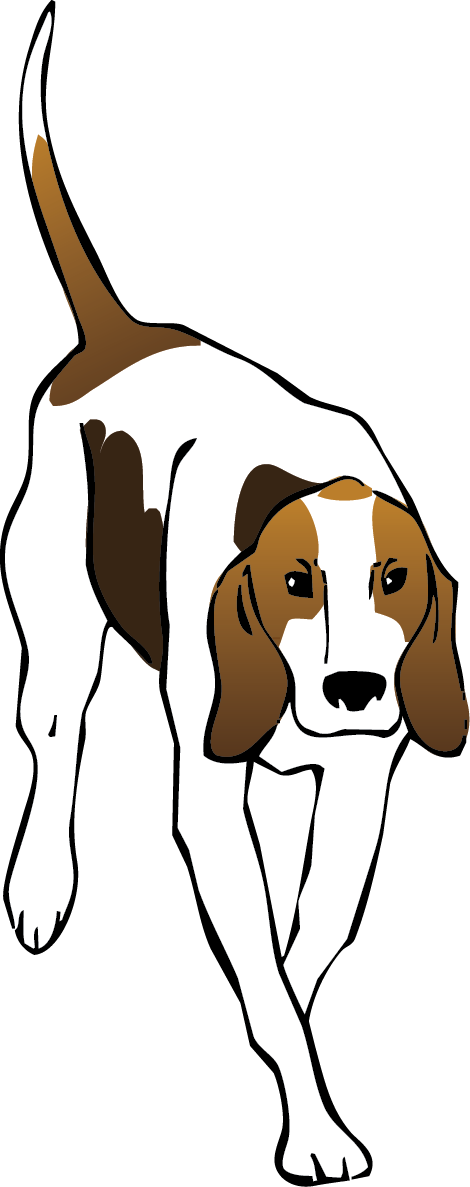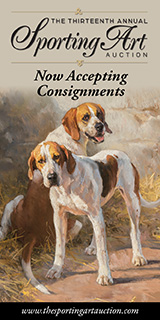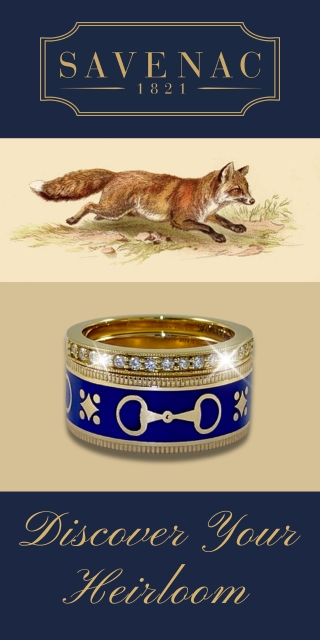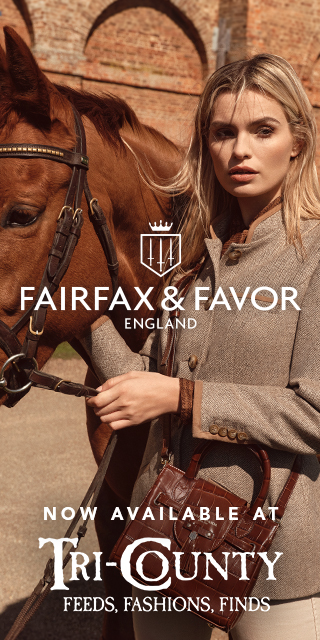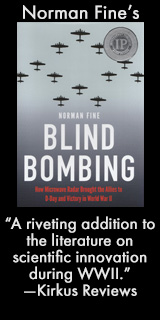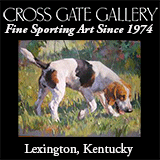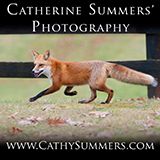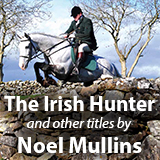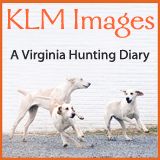Pytchley Foxhounds
Advice to a Young Huntsman
Learning to Handle Hounds in the Field
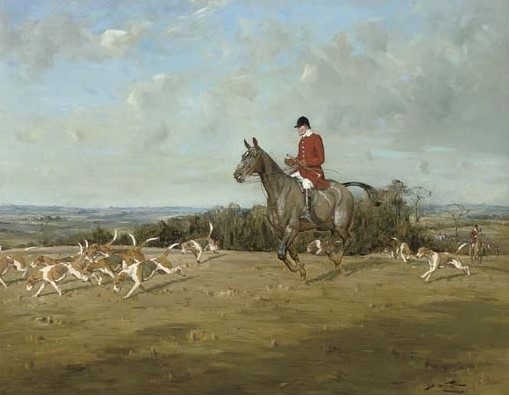 Frank Freeman: 21 years as huntsman to the Pytchley / Painting by George Wright (British)
Frank Freeman: 21 years as huntsman to the Pytchley / Painting by George Wright (British)
What follows is an excerpt from The History of Foxhunting by Patrick Chalmers. Therein, the following text is quoted from Lord Chaplin’s introduction to Lord Henry Bentinck’s Foxhounds and Their Handling in the Field.
I was rather late one morning in arriving at a gorse covert in the Belvoir Country...into which the hounds had just been put to draw. I...saw at once it wasn’t the huntsman who was in the covert with the hounds, and I was told it was the first whip, Freeman, who had never hunted them before, the huntsman being disabled by a fall the previous day. So I went into the covert to see if I could help him.
Atherstone Hunt Cancels Foxhunting Season
The two hundred-year-old Atherstone Hunt that hunts country in West Leicestershire and North Warwickshire (UK) has ceased hunting for the remainder of the season. Bordering the four hundred square mile Atherstone hunting country are the iconic Pytchley and Quorn hunts. According to the Daily Mail, a spokesman for the Atherstone said, “We are sad to report that following a hunt committee meeting on Monday, October 7, 2019, a decision was made for the Atherstone to cease hunting activities for the 2019/20 season with immediate effect. “The longer-term future of the Hunt and its country is being considered with regards to a possible amalgamation or sharing of kennels. “However, the welfare of the hounds remains the priority at this stage. “Arrangements have been made to draft hounds to other packs but while they remain in kennels they are being looked after by hunt staff under the supervision of the Masters. “We would like to thank everyone and in particular our farmers and landowners for their generous support.” The West Midland Hunt Saboteurs organization claims victory after an aggressive six-year campaign targeting the pack. The Canary reports that audio leaks from an Atherstone Hunt meeting revealed that acts by hunt followers had left the hunt uninsured. The alleged acts included a pro-hunting farmer riding a quad into a saboteur, one man slashing the tire on the group’s vehicle, and two men throwing manure at anti-hunt protesters. A spokesperson for the saboteurs’ organization claimed the hunt had been out only three times this season, that the huntsman had left, annual staff turnover was high, and that the hunt was losing members. Posted October 12, 2019
Read More
Squire Osbaldeston: A Sporting Prodigy
Squire Osbaldeston, MFH (foreground) on Ashton, with Sir Frances Holyoake-Goodricke on Crossbow, 1830, hunting the Pytchley in Melton Mobray, Leicestershire, England. Oil painting by John Ferneley
London-born in 1786, George Osbaldeston was a natural athlete. He rowed for various schools that he attended, including Eton and Oxford, neither of which he matriculated. He assiduously avoided academic work, but set high standards for rowdy behavior and was expelled from most of these fine institutions.
He was an outstanding cricketeer, bowling and batting as an amateur in numerous important matches. In 1818, however, he was barred for life from membership in a club as the result of an intemperate outburst, effectively finishing his career in important cricket matches.
‘Dimple,’ A Memory of ’94
The Old Pytchley Hall
This poem, published in Baily’s in 1896, is not just timely (with Christmas and the New Year), but it links directly to contemporary subjects in two of our articles below: James Barclay’s "Sporting Tour" and "Remembering the Curre on Boxing Day." It’s a wistful poem, beginning with the mystery of whence this wonderful hound named Dimple. The mystery is resolved at the end, but no hope of ever seeing her like again is imagined. Why? Because she comes from Wales, and the type of hound anointed as stylish and desirable by the elite English foxhunting establishment of the time would never even consider a different way.
However, the very fact that this poem was written demonstrates that some foxhunters of the time, indeed even the superlative Pytchley huntsman, Young Will Goodall,* yearned for something better. But change in the form of a direct challenge to the establishment wasn’t to come until the twentieth century, and even then the process was painful for all concerned. So, here’s what can be considered a poetic prelude to both the Modern English foxhound and the American-English Crossbred foxhound of today.
The Pytchley Hounds are running hard across the Badby Vale;
They fly like swallows on the wing, altho’ it blows a gale.
’Twould make an old man young, I swear, to see so brave a sight,
As scarlet flashes past, and gleams the Pytchley collar white.**
The Whipper-In Revealed
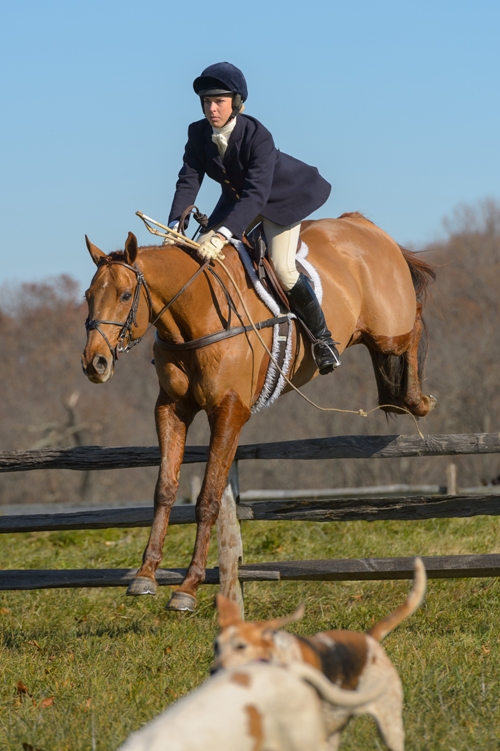 Stephanie Boyer, professional whipper-in, Mr. Stewart’s Cheshire Foxhounds (PA): “I am the huntsman’s eyes and ears, and I have to be honest with him at all times concerning what I see, whether he wants to hear it or not!” / Jim Graham photoYou may have noticed that the whipper-in has been Foxhunting Life’s theme this week. We field members watch these heroic figures, intent in their mission, standing in the irons, galloping on, claiming their “right-of-way” when passing the field, but what do they actually do?
Stephanie Boyer, professional whipper-in, Mr. Stewart’s Cheshire Foxhounds (PA): “I am the huntsman’s eyes and ears, and I have to be honest with him at all times concerning what I see, whether he wants to hear it or not!” / Jim Graham photoYou may have noticed that the whipper-in has been Foxhunting Life’s theme this week. We field members watch these heroic figures, intent in their mission, standing in the irons, galloping on, claiming their “right-of-way” when passing the field, but what do they actually do?
For the answer to this question, read “The Whipper-In Is the Huntsman’s Right Hand” below.
The article “Whipper-In: What’s in a Name?” compares the differing agendas of the professional versus the honorary whipper-in and examines the best use of the whip they carry. “The Galloping Whip” by Brooksby is a poetic tribute to Charles Isaac, a nineteenth century whipper-in with the Pytchley (UK).
For anyone with aspirations to whipping-in one day, a particularly useful book devoted to the subject is Whipper-In by Dennis Foster, Executive Director of the MFHA. Indeed, it’s a good read for anyone interested in how the whipper-in, huntsman, and hounds work together in the field.
According to Peter Beckford, the whipper-in can be the decisive ingredient in turning a mediocre hunting day into a brilliant one. Here’s what he had to say in his classic, ageless 1781 treatise, Thoughts on Hunting.
